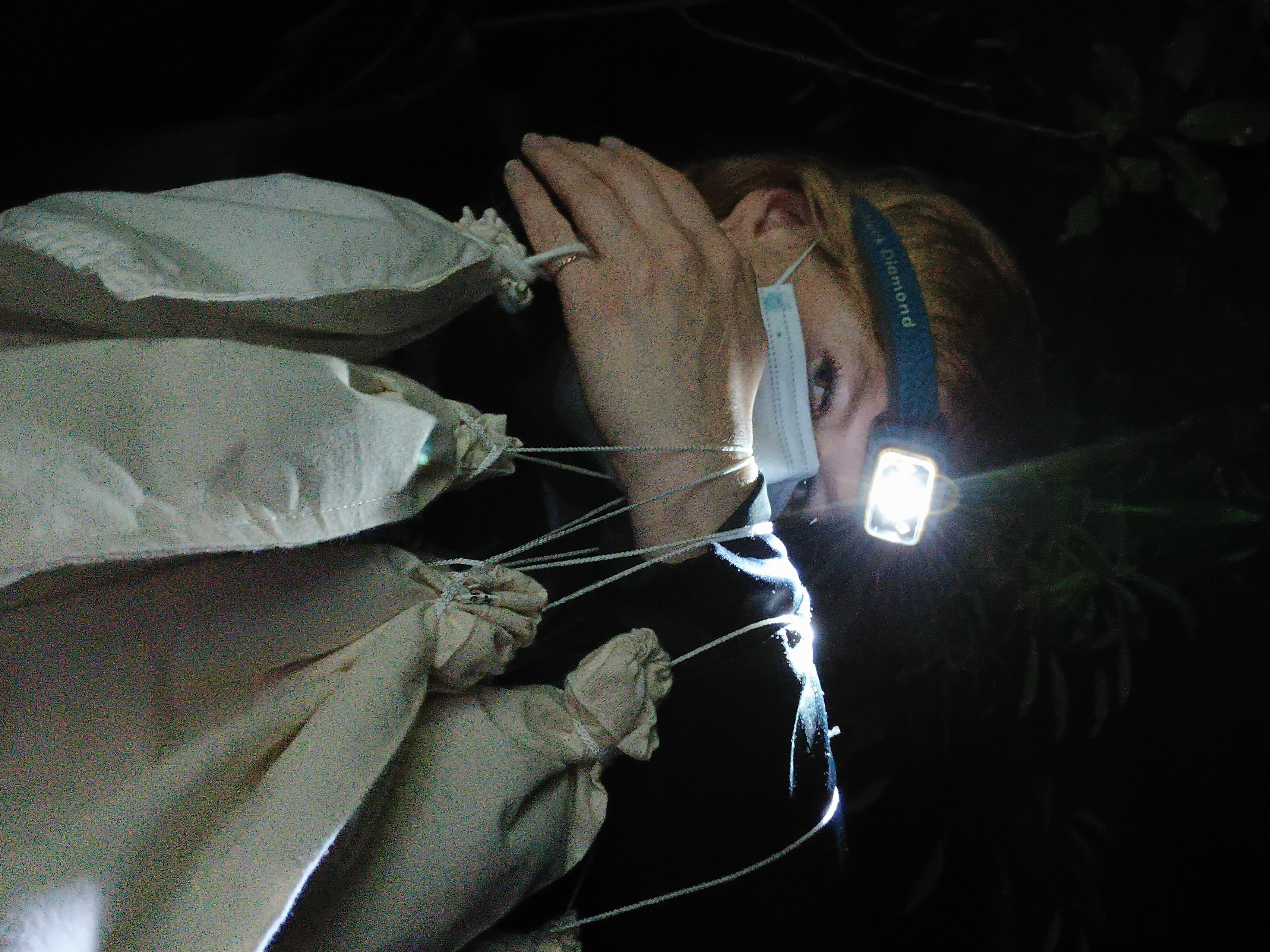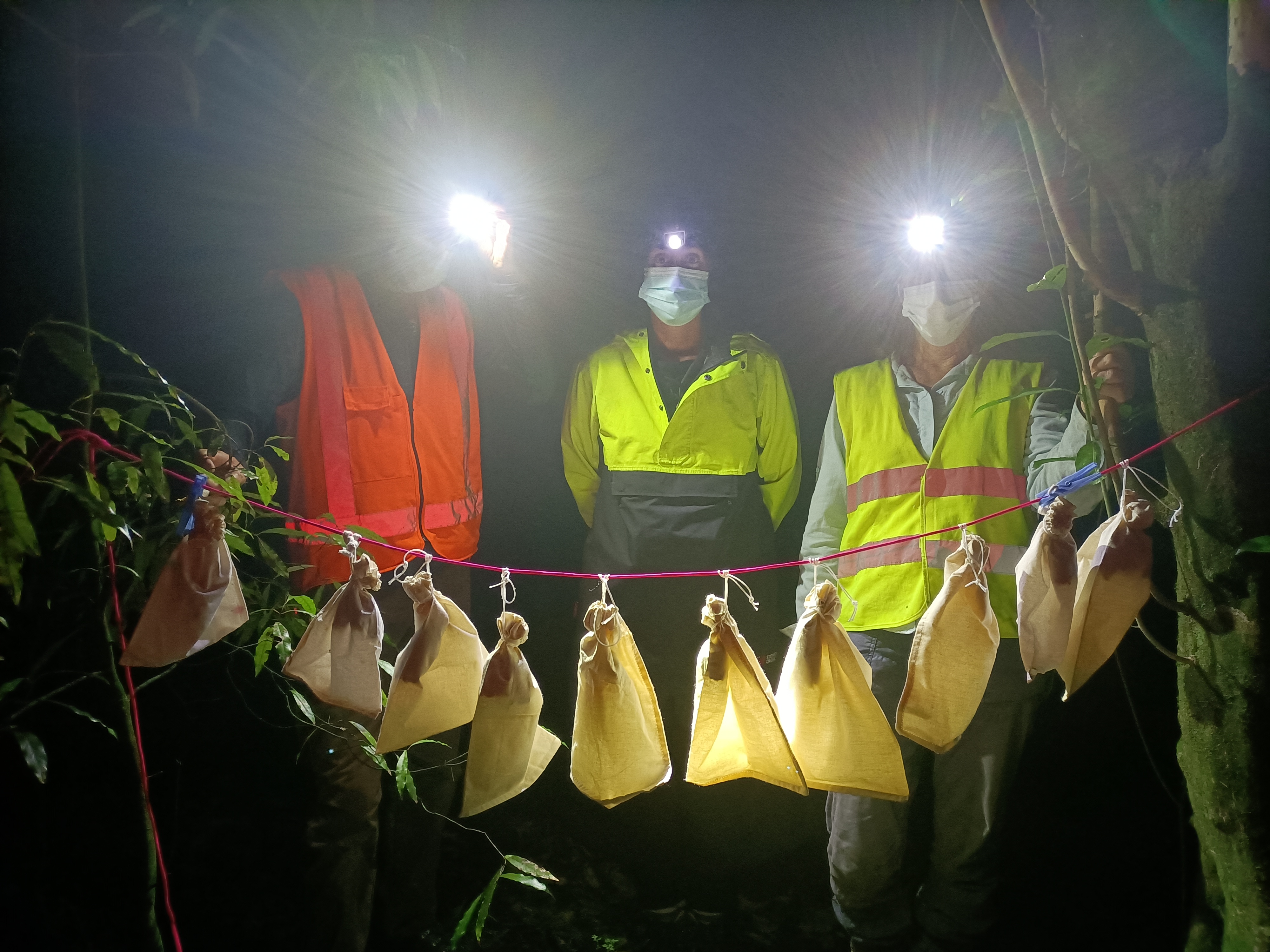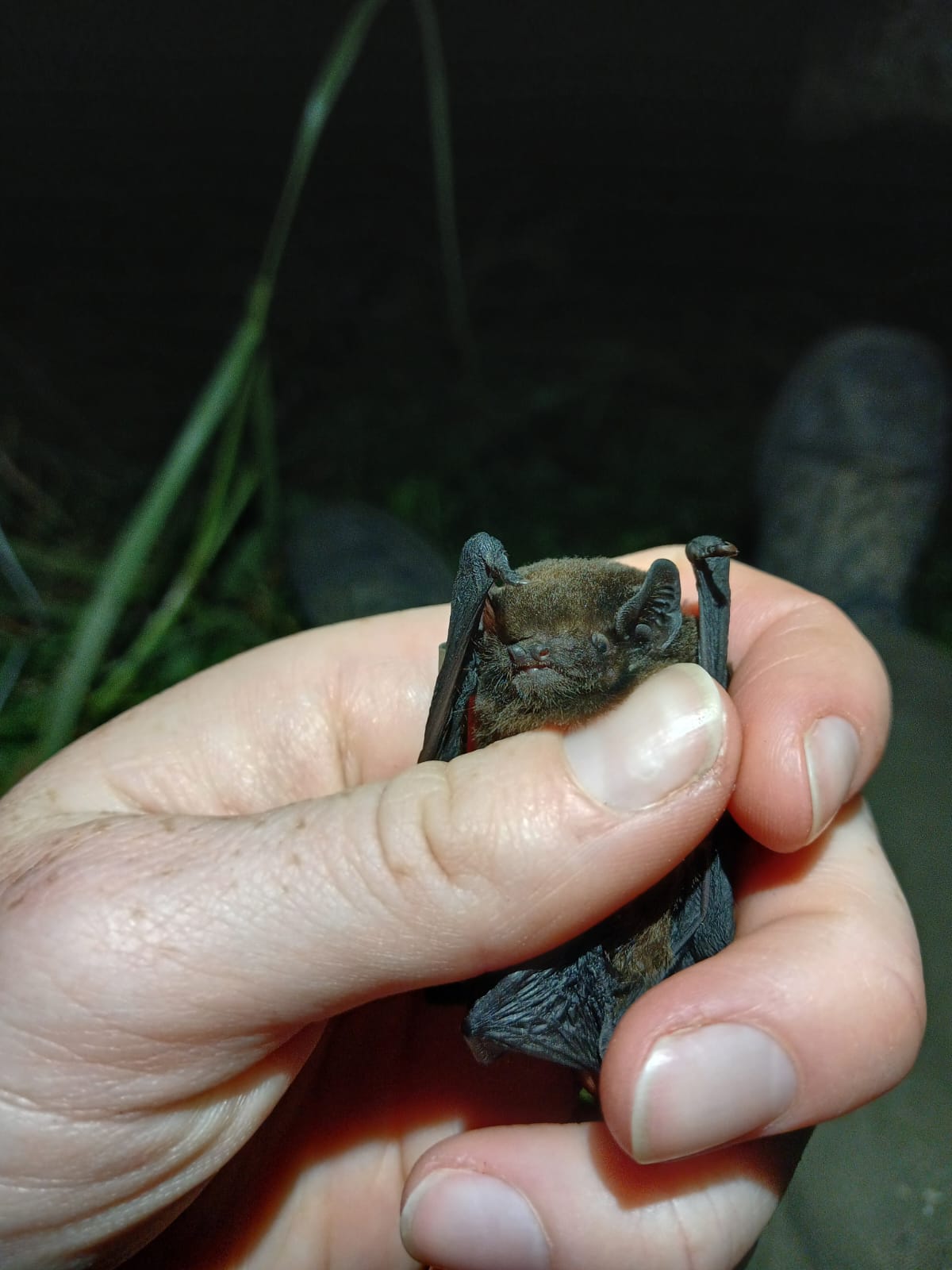Bat recovery project manager reflects
Te Hoiere Bat Recovery Project Manager Dr Daria Erastova says she will remember her final evening spent out in the field with the bat monitoring team at Carluke Scenic Reserve fifty years from now.
“I stood there holding forty-five long-tailed bats captured during the seventh season of bat monitoring and thought to myself, I am going to remember this moment in fifty years. It was incredibly special,” she said.
Daria has spent the past 22 months as project manager for the Forest and Bird initiative focused on protecting pekapeka (long-tailed bats) from predators in Te Hoiere catchment which includes the Pelorus Bridge Scenic Reserve, Ronga Recreation, Brown River and Carluke Scenic Reserves. She finished in the role on 27 February with the Government’s Jobs for Nature funding for the position now at an end but has recommended Forest and Bird recruit a new Predator Control Officer to continue the predator control effort and support project volunteers.
Truly passionate about pekapeka and conservation of threatened species, Daria said it had been an “absolute pleasure” to manage the contractors and field crew as part of the project, many of whom have also now finished with the conclusion of the Jobs for Nature funding. “They have been a dream team,” Daria said.
In December 2021, the bat recovery project got a significant boost by partnering with Te Hoiere Project which helped ramp up predator control, monitoring and habitat restoration to secure the protection of the threatened species in key locations across the catchment.
As Daria departs, the bat capture results from the seventh bat monitoring season are just coming in - the most captures yet in the history of the bat recovery programme which began fourteen years ago. Results from the annual acoustic surveys will also be available soon.
A total of 380 long-tailed bat captures were recorded by Grant Maslowski, Nick Eade, Jen Waite and Abigail Hill (the bat monitoring team) across two key sites - Pelorus Bridge and Rai Valley - this past summer.
“At Pelorus, 205 captures were made involving 122 individual bats with 79 newly banded and 43 recaptured from previous seasons. This marks an increase from last season’s 86 known individuals, due to the discovery of a second social group within the Pelorus Bridge predator control network,” Daria said.
In Rai Valley, 175 captures were recorded with 80 individual bats identified - 54 newly banded and 26 recaptured. “The number of known individuals in Rai Valley nearly doubled from 45 to 80, likely a positive response of the population to our intensified predator control efforts.”
Since monitoring started in 2018/19, 72 confirmed maternity roosts have been identified with 32 in Pelorus Bridge and 39 in Rai Valley. This past season revealed 28 new roosts - nine in Pelorus Bridge, six in Carluke, five in Ronga, five in Brown and three in other locations including private land.
“Maternity roost identification is critical, as these locations are key to protecting vulnerable pups from invasive predators. The consistent increase in known roosts and individual bats highlights the improvements in the mark-recapture methods and targeted conservation efforts in these areas. It could reflect that bats are doing better following our enhanced predator control programme,” Daria said.
The statistics are certainly exciting for the bat recovery project but what is just as rewarding for all involved is the ship rat (the number one bat predator) index returned for the first time at Pelorus Bridge at less than the target threshold of 5 per cent. “The enhanced predator control that has been put in place has helped keep the predator index to 3.3 per cent which is just a wonderful result,” Daria said.
Pekapeka remain a threatened (nationally critical) species, meaning they are at a high risk of extinction. New Zealand’s only true land mammal, these bats can be found feeding on small moths and mosquitoes at Pelorus Bridge Scenic Reserve and other sites managed by the Department of Conservation.

Outgoing Te Hoiere Bat Recovery Project Manager Dr Daria Erastova will always remember her last field trip capturing pekapeka

Forest and Bird bat specialists from left to right Grant Maslowski, Jen Waite and Nick Eade - Credit: Daria Erastova

Some promising results are in from the seventh bat monitoring season for this threatened species - Credit: Grant Maslowski

